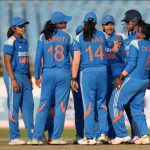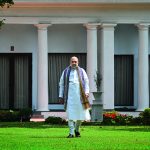Life is Beautiful, So Should Death Be
The legalisation of living wills and passive euthanasia by the Supreme Court gives Indians the right to a dignified end
 Lhendup G Bhutia with Madhavankutty Pillai
Lhendup G Bhutia with Madhavankutty Pillai
 Lhendup G Bhutia with Madhavankutty Pillai
|
15 Mar, 2018
Lhendup G Bhutia with Madhavankutty Pillai
|
15 Mar, 2018
/wp-content/uploads/2018/03/Lifebeautiful1.jpg)
A GOOD DEATH IS one where there is dignity. Where it is painless, at home, and among loved ones. At least that’s what I think,” says Pranab Kumar Bhattacharya over the phone from West Bengal. “It’s not being plugged into some machine or tube, when you are only prolonging death. You need to know when to let go.”
This clarity came to him 12 years ago, as he sat beside his mother in hospital, with the doctor informing him that the time had come. Bani Bhattacharya, 72 years old then, had just been declared ‘brain dead’.
In her lifetime, she had suffered from several complications. She had diabetes, hypertension, left ventricular hypertrophy (a condition where the muscle wall of the heart’s left pumping chamber gets thickened), and in more recent years had begun to suffer from Alzheimer’s disease with psychiatric issues. Now, a stroke had led to cerebral edema (where excess accumulation of water takes place in the brain) and a deep coma.
The Bhattacharyas lived in Sodepur, on the outskirts of Kolkata. He currently heads the pathology department at Calcutta School of Tropical Medicine. As the only family member with a background in medicine, he was expected to decide on the next course of action.
The doctor asked if he would like her organs to be donated. In the next few days, several people contacted him, over the phone and in person (one man even fell at his feet), all of them in need of a liver or kidney for a relative.“I was quite rude to them. I had to be,” Bhattacharya recalls. “They just did not understand (his hesitation about organ donation). The doctors were saying she was brain dead. To me, she was still alive.”
But then something strange occurred. One day, her until-now motionless fingers began to crawl over the bedsheet. She opened her eyelids, yawned, and moved her jaw, her legs and even her head. All her vital signs were normal. She even appeared to identify her family. But it soon became clear his mother was always going to be in a vegetative state, says Bhattacharya.
The question of the next course of action returned. The cardiologist and anaesthetist suggested she be put on ventilator support. But he refused. He later wrote about this moment in a paper for British Medical Journal: ‘I knew that if I had taken the facilities of NICU, Intravascular thrombolysis therapy, a ventilator, she would probably have survived longer… Instead, I sent her home to die a dignified death surrounded by relatives. What would I gain if I would take all these very costly interventions? A vegetative form of life for years? A painful life with all disabilities?’
After about 20 days at the hospital, he had his mother discharged. She was moved back home, where she was cared for under the supervision of a general practitioner. She died three days later.
Bhattacharya’s decision of not having his mother stay on the support of a ventilator would be termed ‘passive euthanasia’, as the Supreme Court has done. In a 2011 judgment—the Aruna Shanbaug case—the apex court had made a distinction between ‘active’ and ‘passive euthanasia’. In the former, as the Court put it, medical professionals deliberately do something that causes the patient’s death. In the latter—which it permitted only after a high court was approached by the next of kin or friend and a committee of doctors certified it—medical professionals simply stop doing what keeps a patient alive: for instance, taking the patient off a life support system. The new judgment has gone a step further and confirmed that the right to a dignified death is part of the right to life under Article 21 of the Constitution. It has also given legal sanctity to the concept of ‘living wills’, by which a person in a competent state of mind can leave behind advance medical directives on whether s/ he should be kept on life support or not if a moment arises when s/he cannot express as much. When Bhattacharya took his decision, it was without any help or direction from the state. But now, after a lot of debate on the moral and ethical quandaries around euthanasia, India seems to have arrived at a point where the law is willing to give death some dignity when it is imminent.
The court isn’t allowing mercy killing, only death with dignity. The withdrawal of life support merely lets death take its natural course
Dr Surendra Dhelia, joint secretary of the Society for Right to Die With Dignity, a group that lobbies for euthanasia, says, “I believe I am the sole owner of my own body. If I would not want my body to be violated by a medical system, which will just about keep me medically alive, even though not alive in any real sense of the term, then this opinion has to be respected. Constitutionally speaking [where the Supreme Court has recognised the right to a dignified death as a part of the right to life], this is a great moment.”
In Bhattacharya’s case, although he is positively inclined towards the court’s decision, his experience of being hounded for his mother’s organs has turned him a little circumspect. “There have to be strict guidelines. [In several instances], organ transplants in India is a big scam. And you have to ensure passive euthanasia is not misused to facilitate that.”
This is a concern that the Supreme Court judgment has indeed addressed. But how will this ruling change things on the ground for terminally ill patients and their families?
Having the concept of passive euthanasia recognised by law is an important first step, but the process laid down by the Court is going to be challenging. Some doctors think it might even be unworkable but hope that as time moves on, the process will get amended and made user-friendly.
One of the shortcomings of the 2011 Supreme Court judgment was that every time life-sustaining medical treatment was to be withheld or withdrawn from a terminally ill patient, the next of kin or next friend would need the permission of a high court and seek a certificate from a committee of doctors. “It was very time consuming and complicated,” Dhelia says. As a result, although passive euthanasia has been permitted since 2011, there has not yet been any reported case where someone has approached a high court for it. “That is because it is being carried out like it has always been, quietly,” Dhelia says. “When a patient can’t be revived, doctors consult the next of kin, and if the relatives so desire, life support is withdrawn. In hospital records, something else is shown, like cardiac arrest.” But the new judgment makes the entire procedure, both for passive euthanasia and the execution of living wills, more cumbersome and extensive than it already is, involving medical boards, both within and outside the hospital, judicial officials and state agencies.
Dr MR Rajagopal, founder chairman of Pallium India, an organisation that was instrumental in making Kerala focus on palliative care, had already made a living will much before this judgment and is heartened that his wishes would now be valid and legally binding. But he finds that the process as spelt out even now is too long-winded. As he wrote in a blog soon after the Supreme Court decision, ‘When I am in agonizing suffering on a ventilator in a hospital, the hospital board will have to meet, study all documents and arrive at a decision. They then have to inform the collector. Let us hope that he will be free and able to act on that day. He sets up a board which studies the documents and arrives at a decision. How many days will that take? Then the decision goes to the magistrate who has to issue the required order after visiting the patient in person. How long will that take? And all this while, I shall be in that cold intensive care unit in agonizing suffering. Thought processes in this matter seem to be limited by the sensational cases like that of the late Aruna Shanbaug. But this is not only about the occasional person who goes into vegetative state and stays alive for a long time. This is about thousands of people with terminal illnesses who go on ventilators in tertiary hospitals every day. This can potentially apply to all those of the 8.2 million people who die in India every year who can afford to go to tertiary hospitals with facilities for artificial ventilation.’ His hope was that if and when the Government eventually passes an End Of Life Care law, it would be more citizen-friendly. The living will, both when it is recorded and later when it is scrutinised before a decision is taken, is similarly arduous. Additionally, in the process detailed by Rajagopal, if any of the boards rejects the proposal, then the family would have to approach a high court, which in turn will set up another independent committee of doctors to examine the case.
Such extensive guidelines have been imposed because of the fear of passive euthanasia and living wills being misused. For instance, the Law Commission of India in 2006 argued against living wills, saying: ‘… in a country where there is considerable illiteracy and lack of knowledge of developments in medicine and technology, there is scope for Advance Directives being based on wrong assumptions… In our view, as a matter of public policy in India, Advance Directives… are controversial and can lead to mischief…’
The new judgement makes the procedure more cumbersome than it already is, involving medical boards, judicial officials and state agencies
Dhelia, however, is unconvinced. “Such an argument makes no sense. It is like saying, ‘Let’s make the knife illegal.’ Just because it can be used to kill someone, you cannot ban it. A knife can be used by a surgeon to save a person.” The Society for Right to Die With Dignity supports the ideas of both active voluntary and passive euthanasia. Dhelia’s support for euthanasia goes back to when his father was bedridden for over two years, suffering from several complications ranging from diabetes to dementia. Dhelia decided to withdraw life support and let his father die peacefully. Even when he was a medical student at King Edward Memorial (KEM) Hospital, a professor once asked the class how a patient, an infant with anencephaly (born without a major portion of the brain) at KEM Hospital should be treated. “I was quite certain even then. I said the baby should be allowed to die,” he says, although the professor did not agree. “The only reason why this [ issue of euthanasia] has dragged on for so long is because the Government doesn’t care to bring the matter to Parliament. It has no electoral value. So the Court has been forced to step in.”
When K Venkatesh passed away in 2004 in Hyderabad, he was only 25. Suffering from muscular dystrophy for a long time, the ailment had reached its final stages. As death became imminent, Venkatesh wanted his body to be of use; his organs needed to be transplanted before they were damaged irreversibly. By then he had even lost his ability to speak, and, from his hospital bed, was beseeching his mother Sujatha through scribbles on paper chits to make his wish come true. Sujatha hurriedly applied to a court to waive a provision in the Human Organ Transplant Act which mandates that brain death is a precondition for taking organs for transplantation. The court obviously refused permission and Venkatesh passed away with his last desire unfulfilled. Open spoke to Sujatha in 2010 when there was a debate over a petition that sought to stop the feeding of Aruna Shanbaug, the nurse who had been in a vegetative state since 1973. She pointed out that only the person who sought death had a right to demand it, no one else could take that decision.
While that held true in her son’s case, Shanbaug had never voiced any desire for the ending of her life when she had been conscious. Even now, after the Supreme Court judgment, both Venkatesh’s and Shanbaug’s case would probably not be a fit case for passive euthanasia.
The story of Shanbaug, a nurse who had been raped and left in a vegetative state for 42 years, has become the cornerstone of the debate on euthanasia in India. But the Supreme Court judgment wouldn’t apply to her because firstly, she left no advance medical directives, and her ‘next friend’—the staff at KEM Hospital where she spent most of her life—did not want euthanasia. Furthermore, Shanbaug was in a vegetative state, but not on life support.
One of the chief concerns about the recent judgment is how it uses the term ‘passive euthanasia’. Many medical professionals find it misleading. The term ‘euthanasia’ means a deliberate action, for instance injecting a patient with lethal drugs, while what the Supreme Court has allowed is the easing of death for patients who would have otherwise died if not kept alive through artificial means. The distinction between the two is important because it frames the way any public discussion is held on the subject. For instance, the Catholic Church in India has already issued a statement opposing the Court decision, arguing that the taking away of a life cannot be morally correct.
The Indian Council of Medical Research has also objected to the Court’s use of ‘passive euthanasia’ in its judgment. It released a document which said, among other things, ‘The term may contain the meaning of an intention to kill. We support withholding or withdrawing futile treatment. We don’t support an intention to kill. Using the more neutral term ‘withholding or withdrawing treatment’ will facilitate public discussion on the topic.’
It is necessary to emphasise that the Court is not allowing mercy killing, only death with dignity. The withdrawal or withholding of life support merely lets death take its natural course.
Two years ago, Dr Vaishali Mohod, an anaesthetist and professor at Mumbai’s JJ Hospital, conducted a study on brain-death awareness for cadaver donations at a Mumbai hospital which she published in Indian Journal of Anaesthesia. Her brother-in-law, who needed a liver transplant, had passed away a few years earlier without receiving one. She says she wanted to show how cadaver organ donations are so difficult to come by because many healthcare professionals are not up to the task.
A total of 87 resident doctors from a premier government medical institute where live donor kidney and corneal transplants are regularly done participated in the study. Interestingly, when asked if there is legal sanction to remove life support when a patient is declared brain dead, 56.3 per cent answered incorrectly that there is no such legal sanction.
Mohod says she was not surprised by the response. “Many brain dead patients are kept on life support needlessly because of lack of awareness. In a government hospital, these things are so important. Knowing a patient is brain dead, communicating that effectively to the family can mean helping someone else [through organ donations], or at least a bed gets free for the next patient,” she says. “What we find is that often doctors find it stressful to explain brain death to relatives. You need people with good interpersonal communication skills to do that.”
The concept of euthanasia, even the idea of withdrawal or withholding of life support in terminal cases in India, is a contentious one. However, brain death is not one of them. When someone is declared brain dead, in India it means he or she is now considered legally dead. Organs from such a patient, if the family permits, can be used for donations.
One of the issues in India is the near absence of palliative care, where the focus is rarely in making death comfortable and pain free. The default option in the approach taken by healthcare professionals, experts point out, is to do everything possible to save a life at all cost. Medical diagnosis and treatment might have improved by leaps and bounds, but the ethics of treatment and the idea of a comfortable death haven’t kept pace.
In 2015, The Economist Intelligence Unit came out with a white paper comparing the quality of death between countries. Among 80, India was ranked 67th. India’s overall score was 26.8 as against the top-placed UK’s score of 93.9. The report said countries which ranked high had the following characteristics: ‘A strong and effectively implemented national palliative care policy framework; High levels of public spending on healthcare services; Extensive palliative care training resources for general and specialised medical workers; Generous subsidies to reduce the financial burden of palliative care on patients; Wide availability of opioid analgesics; Strong public awareness of palliative care.’ India’s poor rank suggests that the country lacks each of these. While change has been slow and incremental, at least the law has set the direction in which the country must move.
Bhattacharya wonders sometimes if his mother would have agreed with his decision. “I don’t know what she would have wanted; she was never in a position to tell,” he says. “But I knew what it meant. And it was better [for her] to die with dignity.”
Related Stories
Emotional Closure
A Private Matter
About The Author
CURRENT ISSUE
Rashmika Mandanna: India’s Sweetheart
MOst Popular
3

/wp-content/uploads/2025/04/Cover-Rashmika-New.jpg)













More Columns
Trump’s Un-American Activities Sudeep Paul
CPM alarmed by shrinking student base Ullekh NP
With No Big Win, BCCI Says No To Hike In Annual Retainership For Women Short Post